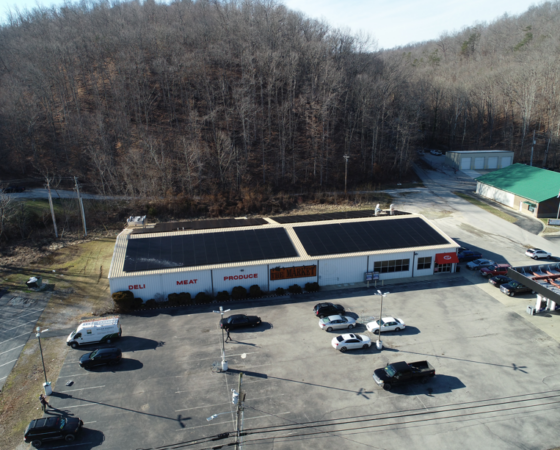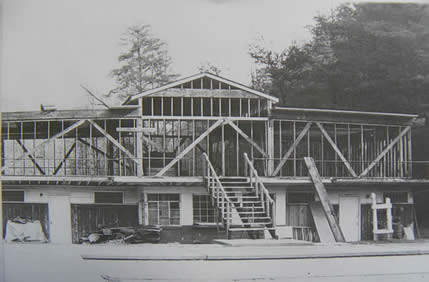To find a nationally acclaimed model of rural broadband implementation, you don’t have to look much further than Jackson County, Kentucky. There, People’s Rural Telephone Cooperative (PRTC) has earned recognition from the industry and the White House for its gigabit fiber network that offers all locations in eastern Kentucky’s rural Jackson and Owsley Counties internet speeds of up to 1 gigabit—that’s 100 times faster than the nationwide average. We talked with Keith Gabbard, the CEO of PRTC, about their experience pioneering rural broadband connectivity.

When Jackson County native Keith Gabbard graduated from college, he took a job with the McKee-based People’s Rural Telephone Cooperative. “I wanted to be close to home,” says Gabbard, who graduated with a degree in management from EKU. What started out as a job answering the cooperative’s telephone has turned into a career stretching 41 years, with Gabbard serving as the CEO and general manager for the past 21.
PRTC is a non-profit cooperative that provides telephone, internet and television services to both Jackson and Owsley counties. It began as a traditional telephone company in the 1950s, later adding dialup internet in the 1990s. Not long into the internet business, PRTC realized that using the phone line’s copper wire, used for dial-up and DSL, was not getting the speeds that people wanted. Around that same time, PRTC acquired a local cable company whose coaxial system needed an upgrade in order to provide high-definition TV.
Upgrading to a 100% fiber-optic network was a way for PTRC to improve both their television services and internet systems at once. Thus, they started working on implementing broadband at “a time when many companies were thinking about doing it but were afraid to,” Gabbard says. “We decided to take the risk.”
Their decision to try broadband in 2008 started as an experiment, with a plan to implement it in just portions of Jackson and Owsley Counties. However, as part of the American Recovery and Reinvestment Act, grant and loan funds became available that allowed PRTC to broaden its plan from an experiment to full implementation of the network, extending to all homes and businesses in the two-county service region within just six years. “What started out as ‘We’ll try it in one area,’ all of the sudden became building it throughout both counties. We were fortunate with our timing that we were able to build it out as quickly as we did,” said Gabbard.
PRTC was one of the first areas in the state, and even the country, to have gigabit network to its entire service area. “We started with something that seemed small. It was the best way to upgrade,” says Gabbard. “I began to realize after we got finished all the benefits that could come from broadband like economic development, education, entertainment and healthcare.”

Education
Jackson and Owsley Counties have been more than willing to experiment with ways to leverage broadband for the benefit of the community. Owsley County, for example, was one of the first school districts in the state to pilot non-traditional instruction days beginning in 2012. These days allow schools up to ten days of non-traditional, internet-based instruction for students and help cut down on the number of snow days a district has to make up. That’s a big deal for a district that missed 31 school days in the harsh winter of 2013, and averages almost 13 snow days a year. Jackson County implemented non-traditional days for the first time this year. These school districts can do this kind of instruction in a large part because of their broadband connectivity.
Telehealth
There are other experiments happening, too. This year, the Jackson County Public Library will pilot a telehealth partnership with the Lexington VA. Veterans in the area will be able to use private space in the library and the library’s gigabit connection (provided free-of-charge by PRTC) in order to connect with certain health services provided by the VA, saving veterans both time and travel expenses. “The VA did a site visit recently, and they were very impressed with what we have going on here. They’re as proud about their telehealth program as we are about our broadband,” Gabbard says. He is more than willing to admit that taking risks like this pilot program does not guarantee success, “but we’re going to make an effort.”
Economic Development
Gabbard remembers that the successful Teleworks USA hub program also started out as “just an idea.” Teleworks came to a vacant industrial building in Annville in 2015 with the plan of training local workers for call-center and customer-service representative jobs for companies that include Microsoft, Apple and UHaul. Once workers are trained, they’re able to work remotely from their homes—bringing job opportunities to their literal backdoor while cutting down on barriers like costly commutes. The program, which has employed over 300 people in Jackson and Owsley Counties in the last two years, reminds Gabbard: “This is why we do what we do.”
He concludes, “PRTC is a non-profit with the mission to serve our members and to make Jackson and Owsley Counties a better place to work and live. We’re in a position to make a difference. While we’re usually falling behind in infrastructure such as roads, broadband is an instance where we’re ahead. We’re working to leverage its capacity to improve the quality of people’s lives.”






